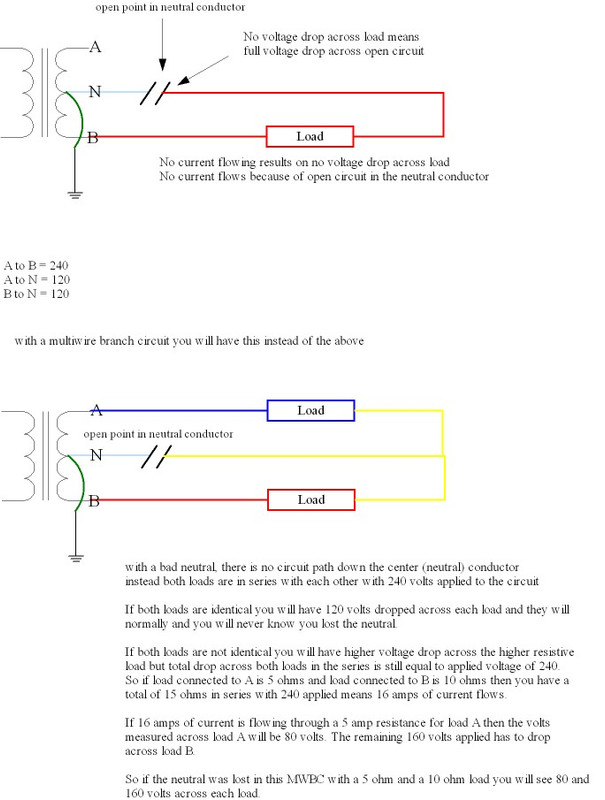You can quite easily simulate the effect of a lost service neutral by performing the following experiment:
Wire up a multiwire branch circuit, put one receptacle on each leg. Put a switch on each conductor... Three switches and total, one on each hot Leg, one on the neutral. Get two cheap shop lights with clamps. Buy an assortment of light bulbs from 20 watt to 100 watt.
First test... Connect a shop light to each receptacle, install 60 watt bulbs in each. Switch on your neutral, then switch both Hots on. The bulbs will be glowing at nearly the same intensity. Now, turn the switch for the neutral off to simulate a break in the neutral. The lights, having the same impedance, should not change intensity except for maybe a very minor bit due to manufacturing differences. With the neutral open, they are now operating in series at 240 volts rather than at 120 volts in parallel. The voltage has doubled, however the resistance has also doubled, so amperage draw remains the same. Both lights or loads have the same impedance, so they still see the same voltage across them as with the neutral closed.
Test number 2, replace one of the bulbs with a 40 watt bulb, and repeat test number one. You will notice when you open the neutral that the 40 watt bulb will glow brighter as it has a larger voltage across it now than the 60 watt bulb. Having 60% of the circuits resistance, it will see 60% of the voltage. Operating at 144 volts will seriously reduce its lifespan, while the 60 watt light bulb is only seeing 96 volts.
Third, repeat the test again this time with a hundred watt bulb and a 20 watt bulb. When you switch open the neutral this time, the 20 watt bulb will glow very brightly than burnout as it is seeing 200 volts (5x + x=240v, x=40). As soon as it burns out, the hundred watt bulb will go out as there is no longer a complete circuit. Now close the neutral switch, it will work normally seeing 120 volts.
When there is no neutral present, the loads operate in series at 240 volts and voltage across something is determined by its impedance. As you can see, the lower wattage items are the ones that see the over-voltage when you lose neutral, that's why you typically blow up electronics and other high resistance/ lower wattage appliances instead of things like coffee pots, space heaters, and microwaves, though it is quite possible for those to get damaged as well.
Visually, one of the first signs of a failing neutral is watching some light bulbs get brighter, while others get dimmer. Conducting the above tests in a safe and controlled manner lets you see the results of a failed (open) neutral, allows you to measure voltages, and most importantly understand the phenomenon and be able to recognize that almost immediately when it happens on a customer's property.


